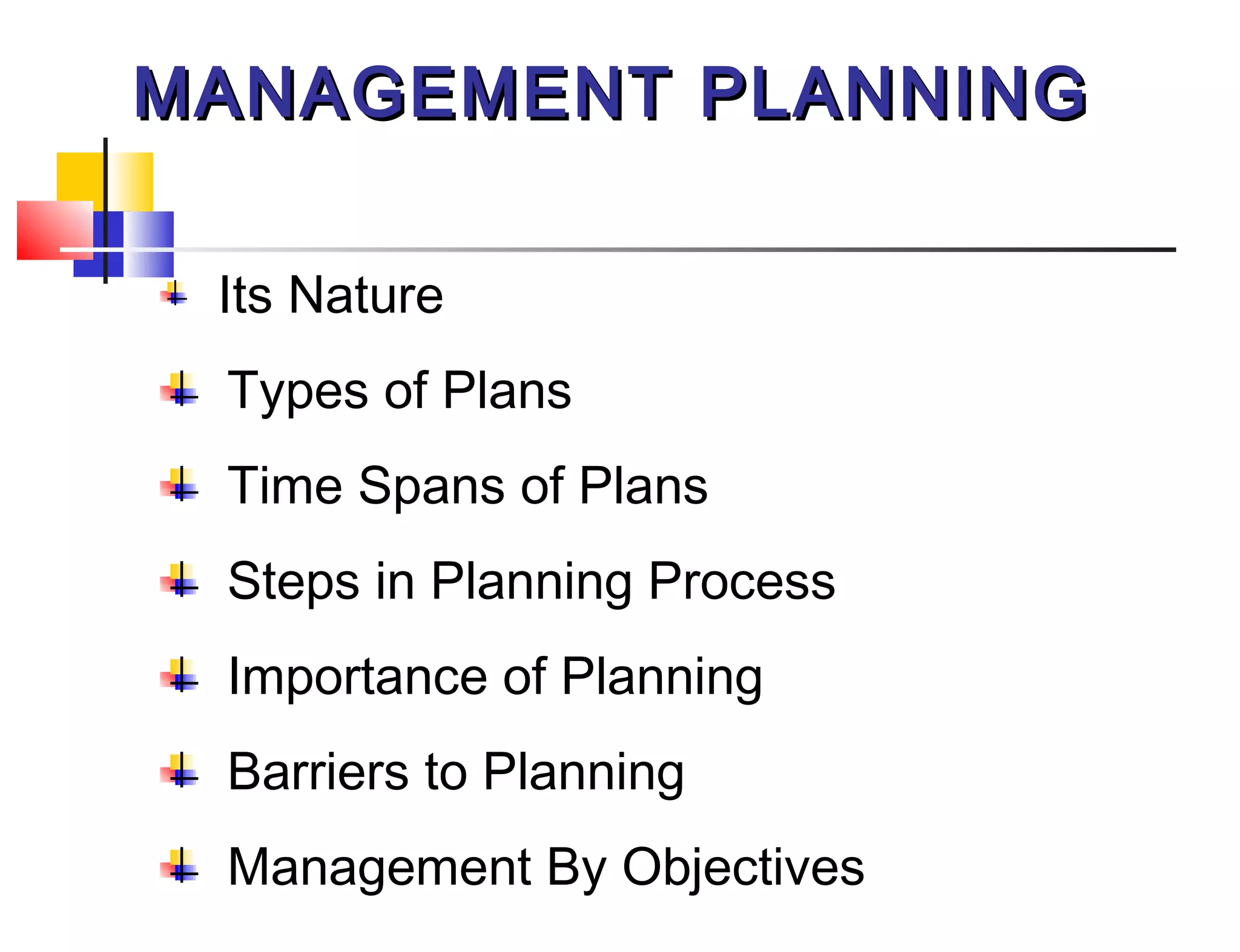This document discusses various aspects of management planning, including:
- The nature of planning involves contributing to organizational purpose/objectives, the primacy of planning preceding other functions, its pervasiveness across management levels, and measuring efficiency.
- Different types of plans including strategic, tactical, operational, contingency, and those with long, intermediate, and short time spans.
- The planning process involves setting objectives/goals, considering alternatives, choosing a course of action, and formulating supporting plans.
- The importance of planning is to offset uncertainty/change, focus on objectives, and facilitate economical and controlled operations.
- Barriers to effective planning can include inappropriate goals, reward systems, dynamic environments, and




















